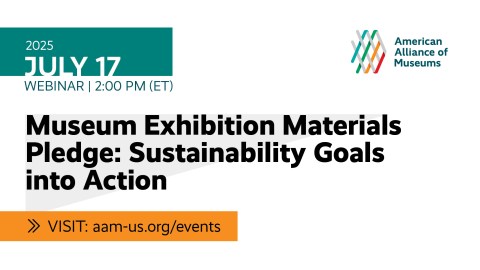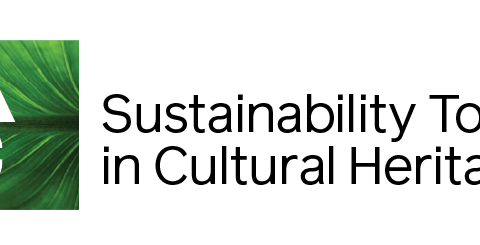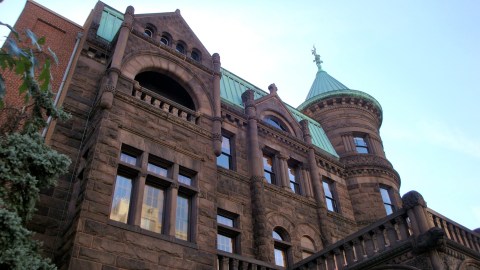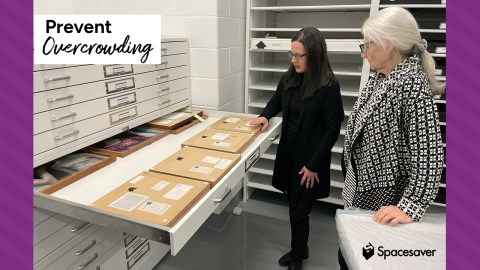A friend who works with, but not in, museums has asked me for predictions regarding characteristics of the museum of the future. He is working on an interesting project to create a prototype of the “future museum” in order to generate conversation inside and outside the field. I’d love to paint a personal vision (including my own universal master key to collections storage and a standing discount on all jewelry in museum stores.) But given the potential impact of this advice, I had better stick to synthesizing what I have heard in the 18 months or so of CFM’s existence. (Of course, much about museums still works and should be preserved—an equally productive discussion could focus on which museum babies should not be thrown out with the bath. But talking about what should change is often more fun. Let’s go there, first.)
So, I predict that the museum of the future will be:
1) Green. (Let’s get this out of the way early, since it is sure to come up.) There is a great deal of debate about what this means—being LEED certified? Generating the museum’s own energy and growing produce for its café? Promoting local rather than global tourism? Trying to influence the behavior of visitors in ways that will promote resource conservation? Figuring out how to partner with organizations in China and India to effect change? (After all, these countries’ collective behavior will swamp out the global effects of anything we do in the US to reduce carbon or conserve resources.) At the same time, there is a good deal of consensus that in some way, shape or form most museums of the future will be conspicuously eco-conscious.
2) Personalized. We live in a world where Web applications display ads and search results based on your browsing history and social media connections. There are few remaining technological boundaries to any service organization knowing as much about you as you care to share (and some stuff you wish they didn’t know). As Nina Simon has pointed out, there is no excuse for museums not to provide similarly personalized experiences, rather than acting like their patrons are strangers every time they walk through the door. The museum of the future will track and serve people as individuals—providing personalized benefits, interpretation, suggestions and even access based on your history with them. Liked the show on Giant Ground Sloths last year? Get a tweet reminding you of the upcoming exhibit on Megatheriums. Visited six times in the past year? Get an automatic “get in the door free” next time you show up. Use your iPhone to “tag” your six favorite paintings on your museum user profile, and receive back a list of “you may also like” with a gallery map of where to find these suggestions.
3) Comfortable. In the future, museums will become Ray Oldenburg’s quintessential “third place”—anchors of community life that foster broad, creative interaction between people who might otherwise not interact with each other. This is a huge challenge, but as Robert Janes has written, some kind of “dialog center,” formal or informal, will be as common in museums as food service is now. (Perhaps not as ubiquitous as restrooms.) This requires multiple adaptations in both physical environment, programming and operational behavior. Some of the models Janes discusses include sophisticated technological support for substantive conversations. Other important changes may be low- or no-tech. We will minimize barriers to “just dropping in” (cost/distance/open hours); comfort (places to sit, hang out, eat and drink, access the Internet, kibbitz and even snooze); have fun (structured or unstructured play); and some very thoughtfully engineered support systems to encourage interactions with strangers. (Another topic on which Nina has written extensively.)
4) Interactive. Not in the simple sense of having flip labels to manipulate or computer games to play. Interactive in the true sense that the visitor and the museum act on and influence each other. The CFM report Museums & Society 2034 points out that the up and coming Millennials expect to be actively involved in “curating” their experience, not passive consumers of content. The museum of the future will have many layered strategies for inviting users to contribute to the work of the museum, whether it is encouraging visitors to create and post their own podcast tours of exhibits; research and document the collections based on their own areas of interest and expertise; share their experience of the museum visit with remote users; or participate in core decision-making about planning and use of museum resources. In this way, museums will become an extension of the “mash-up” and “crowdsourcing” cultures promoted by Web 2.0.
5) Flexible. With our physical and cultural environment changing so rapidly, it no longer makes sense to invest our resources in capital projects that may be outdated within the decade. The buildings we do construct will need to be able to change with the times, and we may have less emphasis on single sites and more on distributed content. Museums of the future will truly embody Louis Sullivan’s dictum that “form follows function,” which may mean “following” the museum out into the community, or into the virtual realm. Museums will invest more in making their resources accessible, and delivering their services to people where the people live, and less to monumental and relatively inflexible architecture.
Whew. That is my quick data dump of what I have heard in dozens of conversations around the country, and I am sure I have left out more than I have put in. Please add your two cents here in comments on the blog, or as video musings at Voices of the Future! When those outside the museum community take an interest in what we do, it can lead to productive dialog and collaborations about change.









Change doesn't have to be scary if it is participatory. Have we asked the next generation who are not coming to Museums why they aren't? Or what they expect if they did come or who they think goes? Then using that imput, change can be constructed that shares the passions of those who are coming in a way that those who are not can understand and find their own path to the start of their Museum passion.
This was an excellent post. I am still trying to figure out what the first comment was supposed to mean. It's great to see this kind of thought being given to our greatest cultureal institutions – our museums.